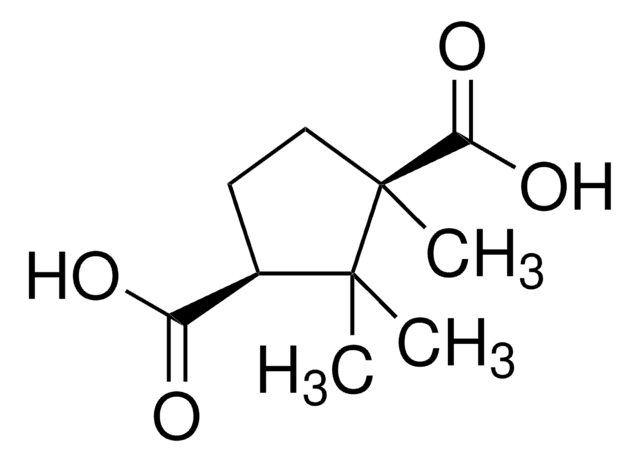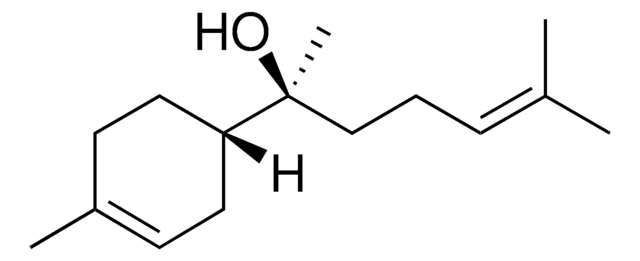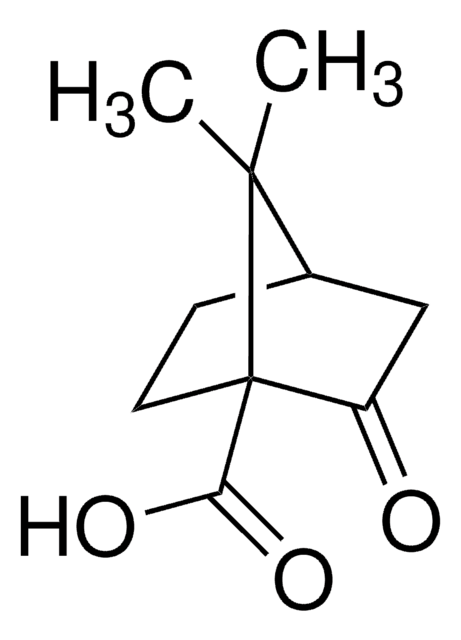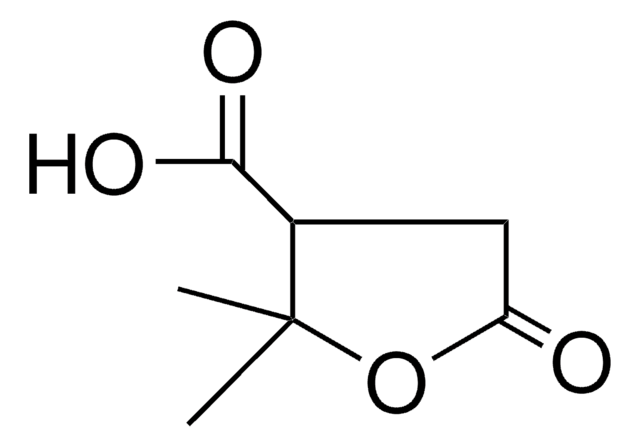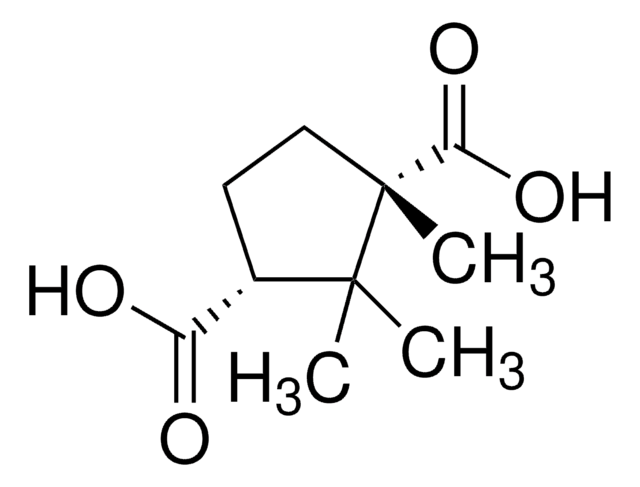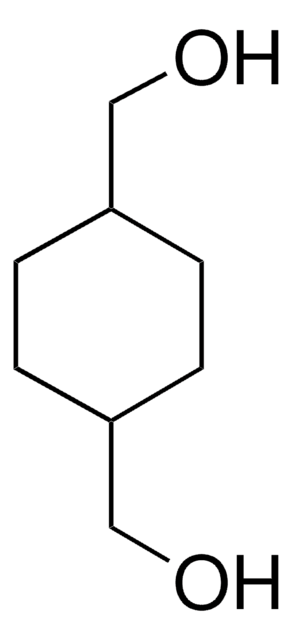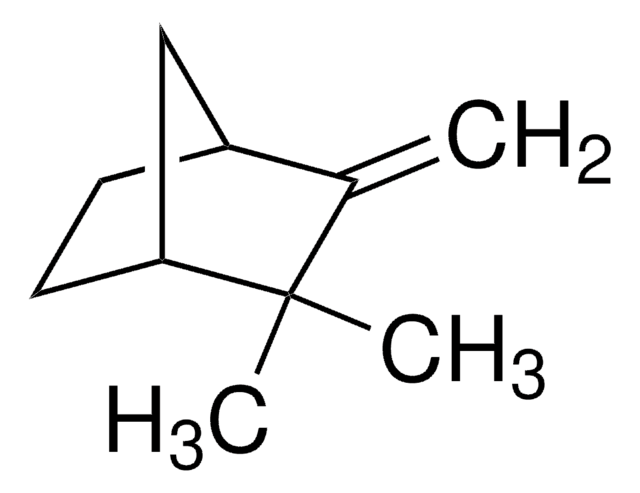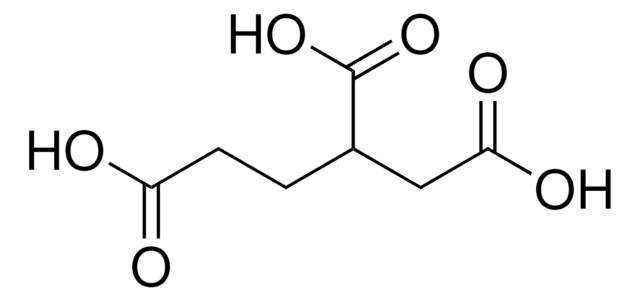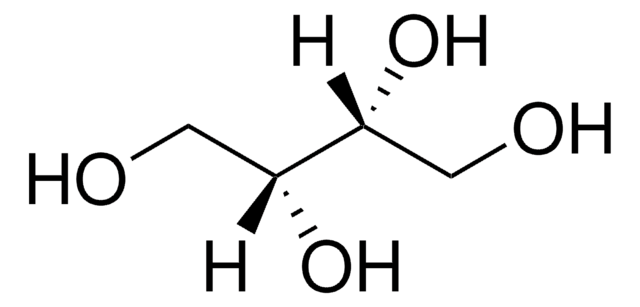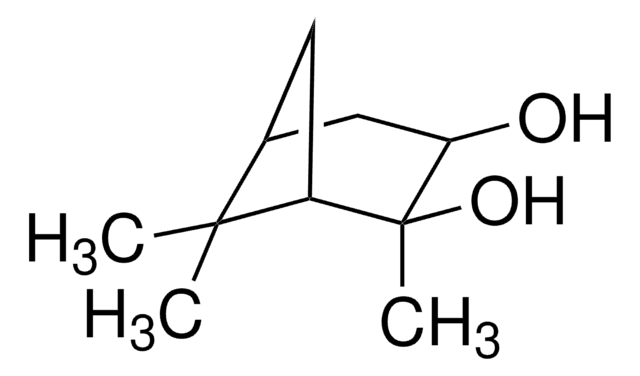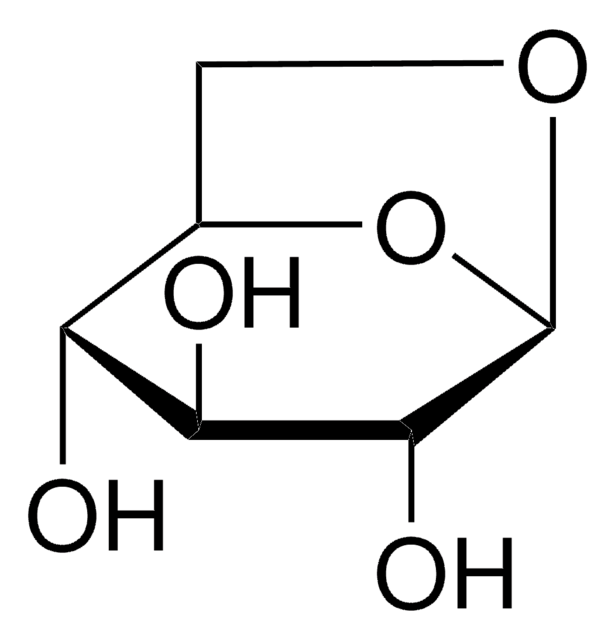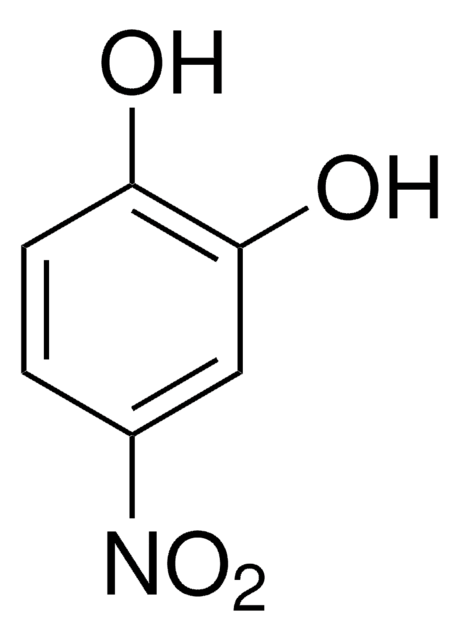110108
cis-Pinonic acid
98%
Sinónimos:
cis-3-Acetyl-2,2-dimethylcyclobutaneacetic acid
About This Item
Productos recomendados
Análisis
98%
formulario
solid
mp
104-107 °C (lit.)
grupo funcional
carboxylic acid
ketone
cadena SMILES
CC(=O)[C@@H]1C[C@H](CC(O)=O)C1(C)C
InChI
1S/C10H16O3/c1-6(11)8-4-7(5-9(12)13)10(8,2)3/h7-8H,4-5H2,1-3H3,(H,12,13)/t7-,8+/m1/s1
Clave InChI
SIZDUQQDBXJXLQ-SFYZADRCSA-N
Categorías relacionadas
Descripción general
Palabra de señalización
Warning
Frases de peligro
Consejos de prudencia
Clasificaciones de peligro
Eye Irrit. 2 - Skin Irrit. 2 - STOT SE 3
Órganos de actuación
Respiratory system
Código de clase de almacenamiento
11 - Combustible Solids
Clase de riesgo para el agua (WGK)
WGK 3
Punto de inflamabilidad (°F)
Not applicable
Punto de inflamabilidad (°C)
Not applicable
Equipo de protección personal
dust mask type N95 (US), Eyeshields, Gloves
Elija entre una de las versiones más recientes:
Certificados de análisis (COA)
¿No ve la versión correcta?
Si necesita una versión concreta, puede buscar un certificado específico por el número de lote.
¿Ya tiene este producto?
Encuentre la documentación para los productos que ha comprado recientemente en la Biblioteca de documentos.
Los clientes también vieron
Nuestro equipo de científicos tiene experiencia en todas las áreas de investigación: Ciencias de la vida, Ciencia de los materiales, Síntesis química, Cromatografía, Analítica y muchas otras.
Póngase en contacto con el Servicio técnico